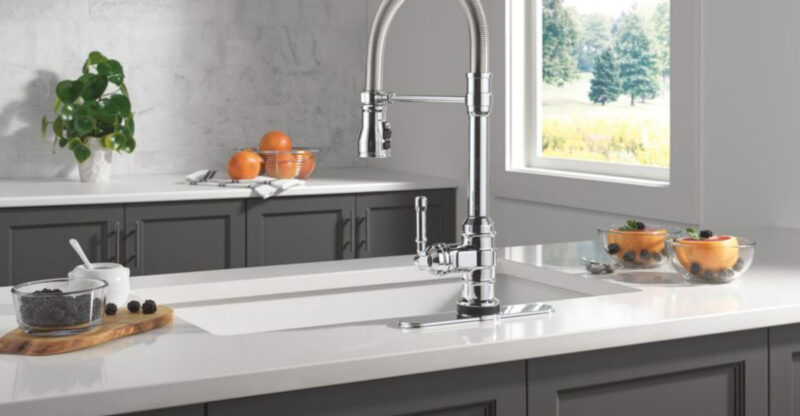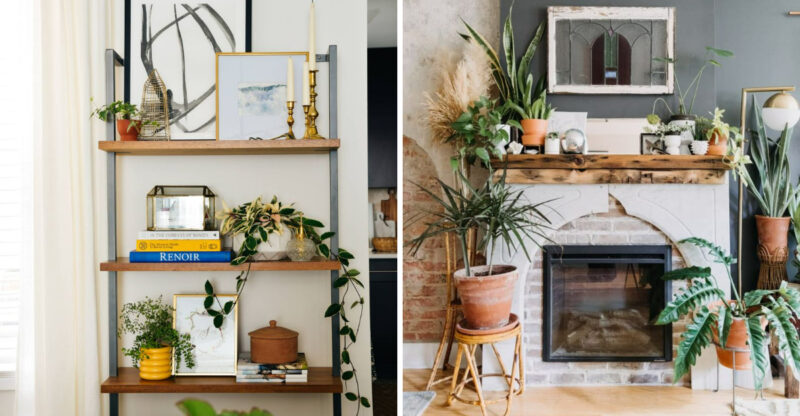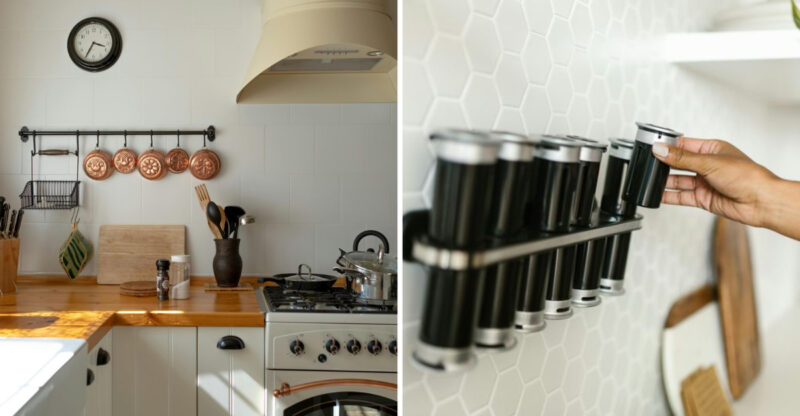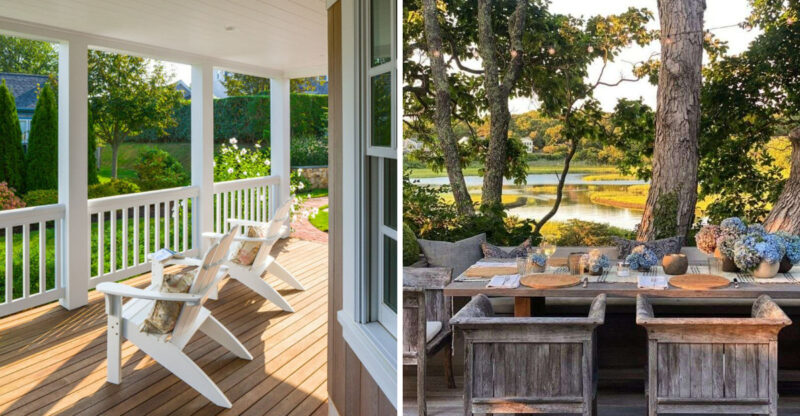10 Details That Instantly Age North Carolina Kitchens (And 10 That Modernize)
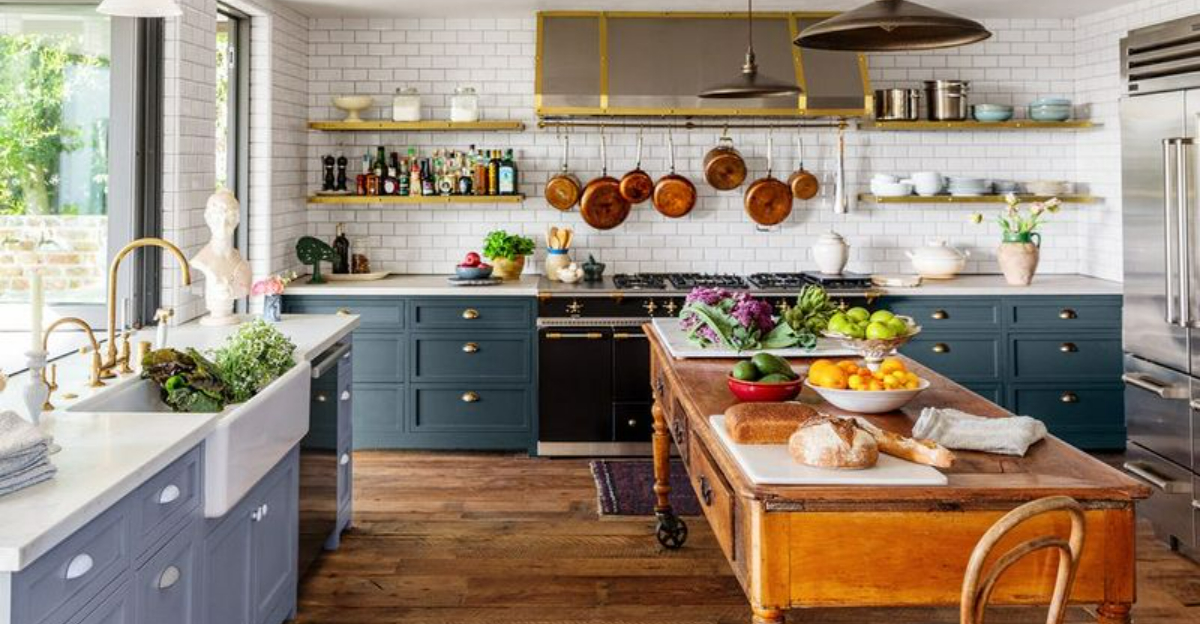
North Carolina kitchens reflect both our rich Southern heritage and our forward-thinking design sense. Many homeowners find themselves stuck between outdated features that scream 1990s and modern touches that bring spaces into the 2020s.
I’ve noticed how small details can make the biggest difference in whether your kitchen feels like a blast from the past or a contemporary cooking haven.
1. Oak Cabinets With Honey Finish
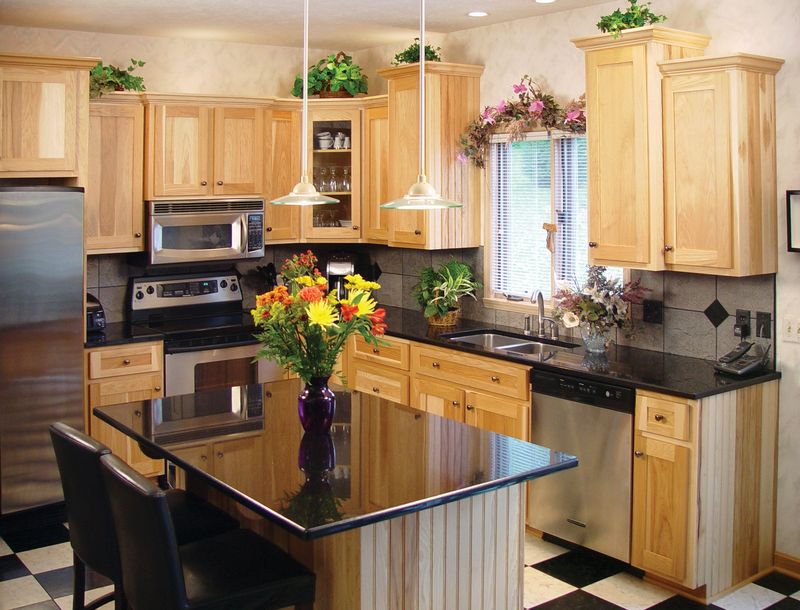
Remember when every kitchen in the Tar Heel State had those golden oak cabinets? The honey-colored wood that once dominated North Carolina homes now instantly dates your kitchen to the 1990s.
While solid wood construction remains valuable, that particular orange-yellow tone screams “outdated.” Many of my neighbors have these relics from when Charlotte was just beginning its big growth spurt.
Quality cabinetry deserves appreciation, but this specific finish belongs in our nostalgic memories rather than our modern kitchens.
2. Fluorescent Box Lighting
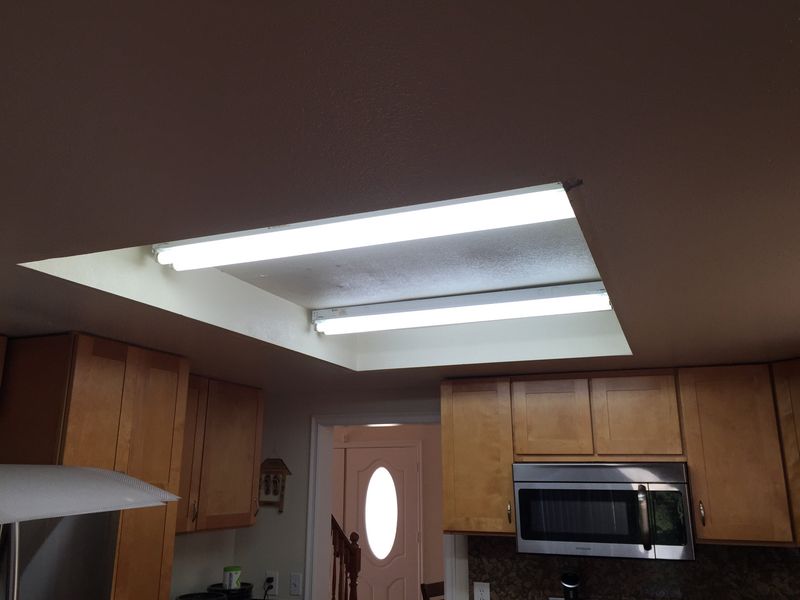
Those giant rectangular light fixtures with fluorescent tubes create the most unflattering kitchen ambiance imaginable. The harsh, clinical lighting casts a sickly glow that makes even fresh produce look unappetizing.
Hanging prominently from the ceiling, these fixtures were standard in North Carolina homes built through the early 2000s. The buzzing sound they often develop adds another layer of irritation to their already dated appearance.
Nothing says “time for a renovation” quite like walking into a kitchen with this unmistakable lighting choice from decades past.
3. Country Blue and Mauve Color Schemes
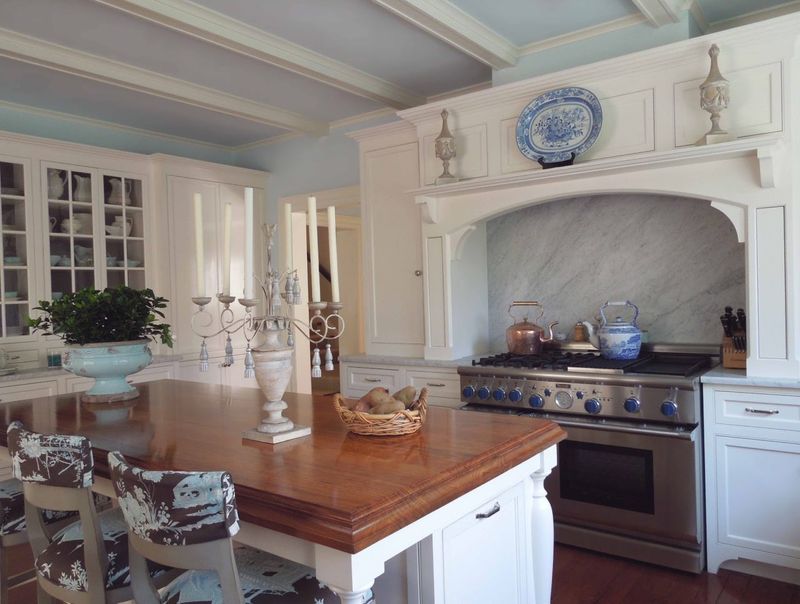
Country blue paired with dusty mauve dominated North Carolina kitchens in the late 1980s through mid-1990s. These faded pastel combinations appeared on everything from wallpaper borders to countertops and backsplashes.
Remnants of this color scheme immediately transport visitors back to a time of big hair and bigger shoulder pads. Kitchens sporting these hues feel like time capsules rather than functional cooking spaces.
Even small touches in these distinctly dated colors can overshadow any modern elements you’ve added to your kitchen.
4. Tile Countertops With Dark Grout
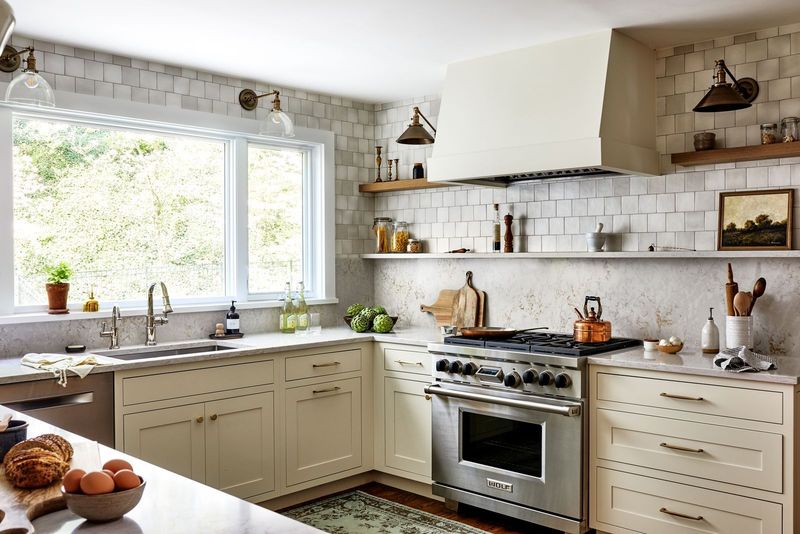
Ceramic tile countertops with dark grout lines were once considered practical in North Carolina homes. Today, they’re a dead giveaway of an aging kitchen that hasn’t seen updates in decades.
The uneven surface makes rolling out biscuit dough nearly impossible, and those grout lines? They’re notorious for trapping food particles and harboring bacteria despite your best cleaning efforts.
Beyond the practical issues, the dated appearance of these countertops – especially in beige, white, or speckled patterns – immediately identifies a kitchen stuck in the past.
5. Wallpaper Borders Near The Ceiling
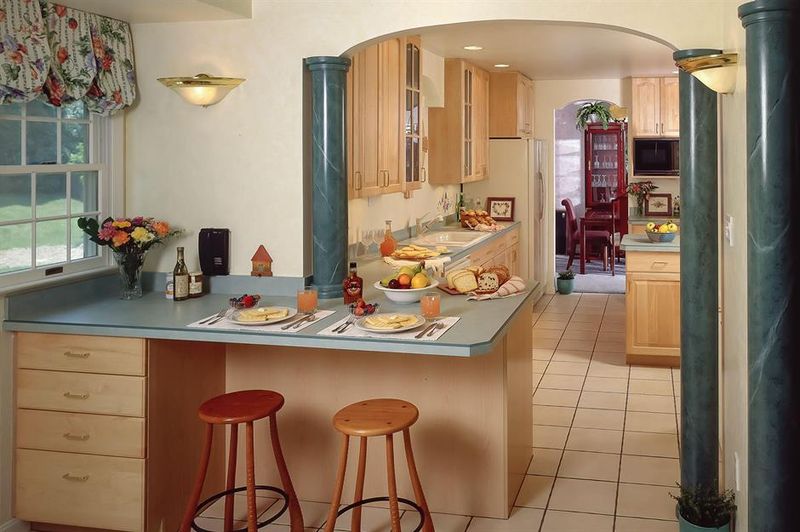
Those skinny strips of wallpaper running along the top of kitchen walls were practically mandatory in North Carolina homes of the 1980s and 90s. Featuring everything from country geese to fruit baskets, these borders attempted to add character but now just add years.
Peeling corners and faded colors make these decorative strips look even more tired. Many homeowners don’t realize how quickly these dated details catch visitors’ eyes.
Removing these borders can instantly subtract a decade from your kitchen’s apparent age without any other renovations.
6. Brass Hardware And Light Fixtures

Shiny brass cabinet pulls, faucets, and light fixtures were the hallmark of upscale North Carolina kitchens in the late 80s and early 90s. That golden gleam that once signaled luxury now broadcasts that your kitchen hasn’t been updated in decades.
The yellowish tone clashes with today’s preferred metal finishes. Most telling is the specific shape of these fixtures – those rounded cabinet pulls and ball-ended drawer handles are unmistakably from another era.
Even worse are the brass chandeliers with frosted glass shades that still hang over many Carolina breakfast nooks.
7. Laminate Countertops With Wood Trim
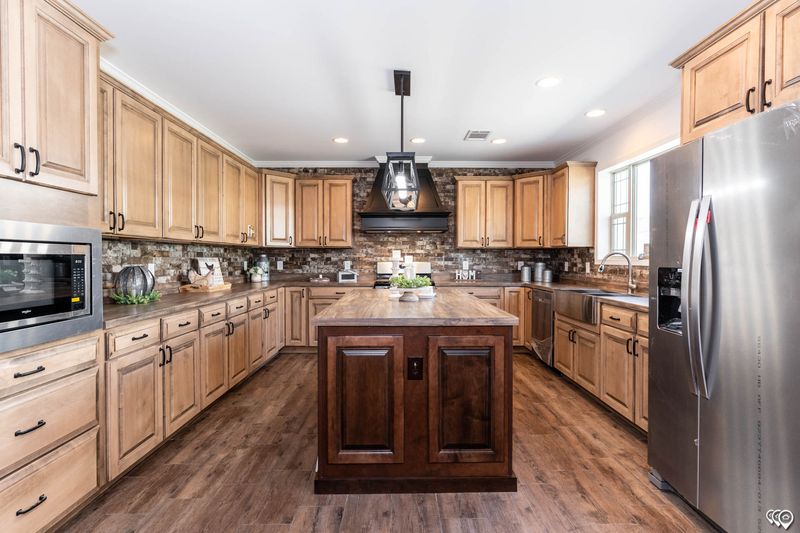
The telltale brown wooden strip along the edge of laminate countertops instantly dates North Carolina kitchens. This detail, meant to finish the raw edge of the laminate, creates a distinct line between counter and cabinet that screams “builder-grade from decades past.”
Often paired with beige or speckled laminate patterns, these wood-trimmed counters were standard in affordable homes throughout the state. The trim inevitably becomes a collection point for moisture damage and food debris.
No matter how well-maintained, this specific countertop treatment marks your kitchen as a relic from another era.
8. Tuscan-Inspired Faux Finishes
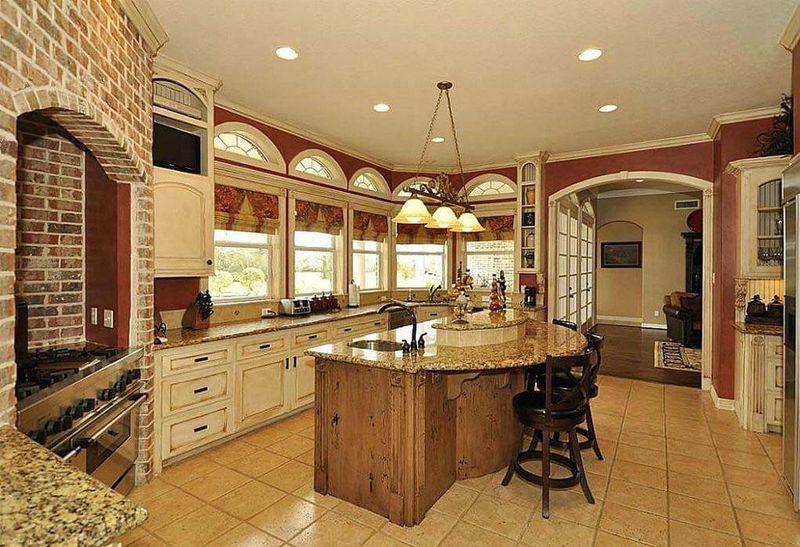
Remember when everyone in North Carolina wanted their kitchen to look like an Italian villa? That sponge-painted gold and rust faux finish on the walls was all the rage in the early 2000s.
Paired with grape and wine bottle motifs, these textured paint techniques were meant to create Old World charm. Instead, they created a dated look that’s distinctly pre-recession in style.
The heavy, ornate aesthetic of Tuscan-inspired kitchens feels cluttered and dark compared to today’s brighter, cleaner designs that most Carolina homeowners now prefer.
9. Speckled Granite In Tan And Brown
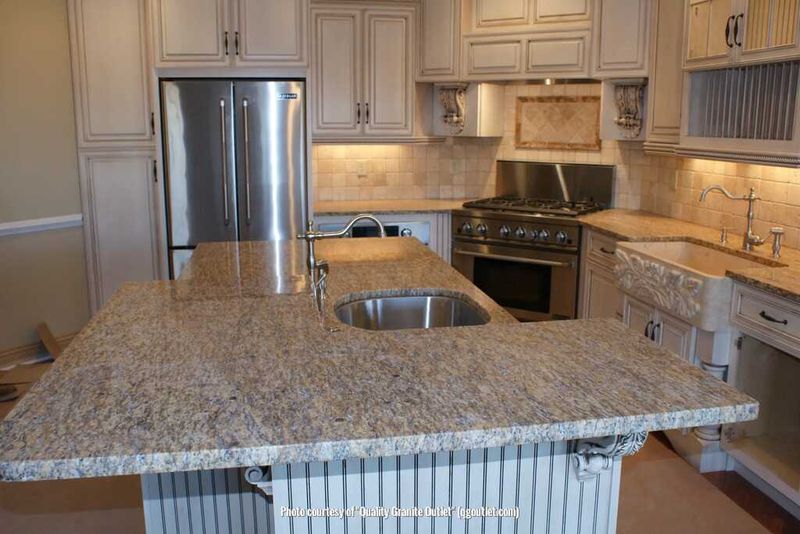
Those busy, speckled brown granite countertops that dominated the early 2000s housing boom across Charlotte and Raleigh now look as dated as flip phones. The particular tan-brown-black speckled pattern known as “Santa Cecilia” or “Venetian Gold” was once in nearly every new North Carolina home.
While granite remains a quality material, these specific color patterns have become the avocado green appliances of our generation. The busy pattern competes with everything else in the kitchen.
Many homeowners don’t realize how much this particular countertop choice ages their otherwise updated space.
10. Decorative Grape And Rooster Motifs
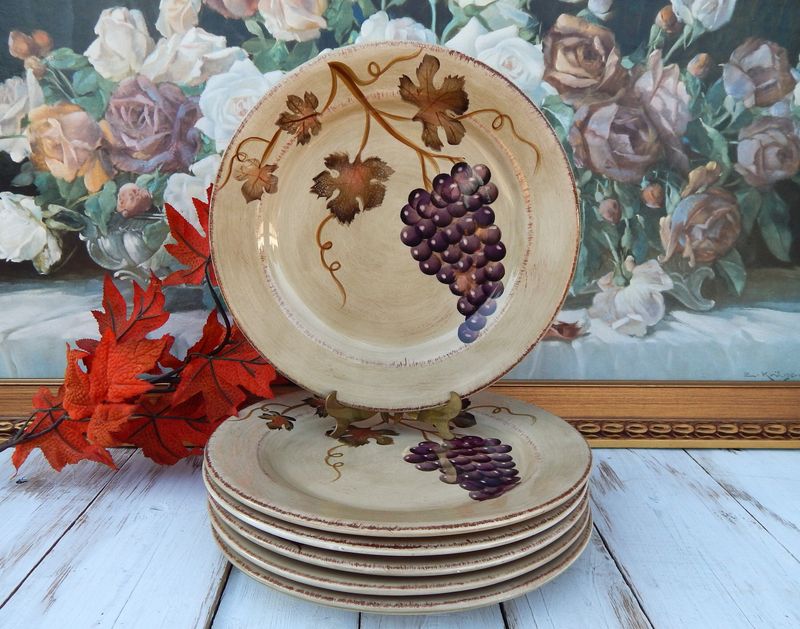
Grape clusters, wine bottles, and strutting roosters once adorned every surface of stylish North Carolina kitchens. From tile backsplashes to cabinet knobs and every piece of wall art, these motifs saturated the early 2000s decorating scene.
The “kitchen-themed” decorations were particularly popular in suburban homes throughout the Triangle and Charlotte regions. Now they serve as immediate indicators of a space that hasn’t been refreshed in two decades.
Even one rooster cookie jar or grape-themed clock can date an otherwise contemporary kitchen, making it feel like a time capsule from 2003.
11. Waterfall Quartz Countertop Extensions
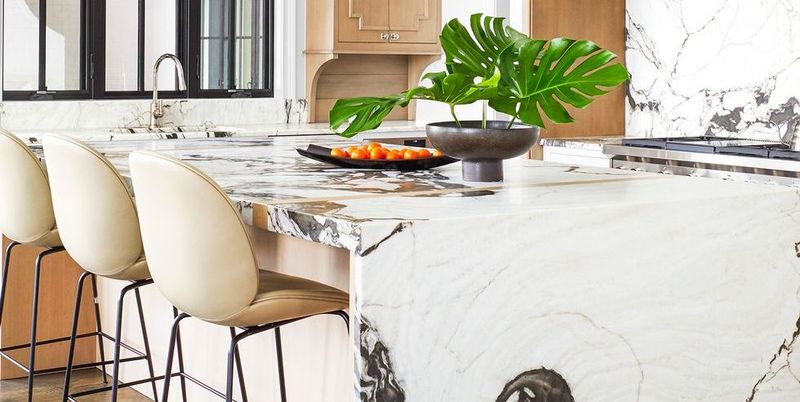
Modern North Carolina kitchens are embracing the dramatic statement of waterfall edges on kitchen islands. The countertop material continues seamlessly down the sides to the floor, creating a sleek, sculptural effect that instantly updates any space.
This architectural detail transforms utilitarian islands into art pieces. I’ve seen stunning examples in renovated Asheville bungalows and new Charlotte townhomes alike, using everything from crisp white quartz to dramatic veined marble.
The clean lines and contemporary feel make this one of the most impactful modernizing choices for Carolina kitchens today.
12. Two-Tone Cabinet Finishes
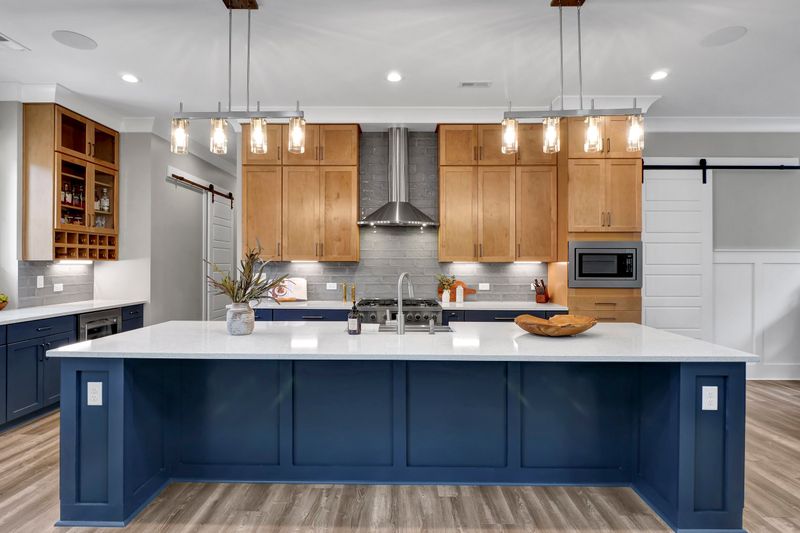
Carolina homeowners are breaking the matchy-matchy cabinet tradition by painting upper and lower cabinets in complementary colors. Navy blue bases with crisp white uppers or charcoal lowers with sage green tops create dynamic, custom-looking kitchens.
This trend feels particularly at home in North Carolina, where traditional and modern aesthetics often blend. The contrast adds visual interest without requiring a complete kitchen overhaul.
Even in historic Wilmington cottages or Raleigh colonials, this simple update brings kitchens firmly into the present while respecting architectural heritage.
13. Statement Range Hoods

Forget hiding your ventilation system! Forward-thinking North Carolina kitchens now feature range hoods as focal points rather than functional afterthoughts. Custom metal hoods in copper, brass, or matte black create instant visual interest.
Wooden hoods with custom trim work are especially popular in the state’s transitional homes, bridging traditional craftsmanship with contemporary design. These architectural elements draw the eye upward and create a sense of height.
The hood becomes a sculptural element that anchors the cooking area and signals serious culinary intentions – perfect for our state’s growing foodie culture.
14. Smart Appliances With Voice Control
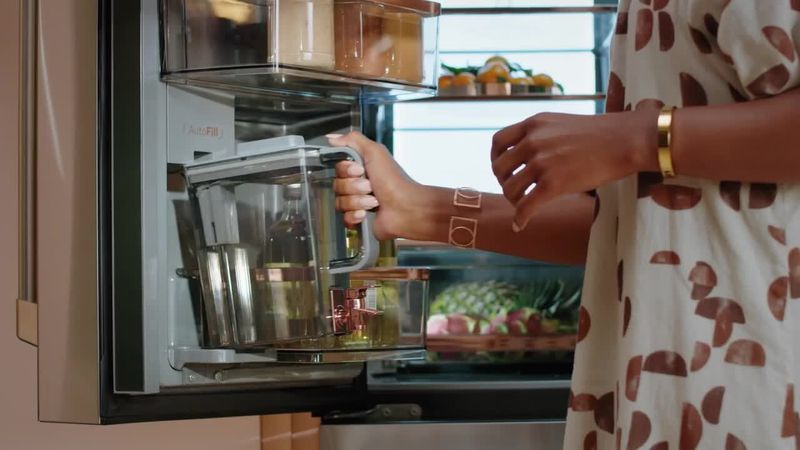
Carolina kitchens are getting smarter with refrigerators that track groceries and ovens you can preheat from your phone while stuck in Raleigh or Charlotte traffic. These tech-forward appliances blend seamlessly into contemporary kitchen designs while offering unprecedented convenience.
Voice-activated faucets have become particularly popular for busy families. Just tell your kitchen to “turn on water” while your hands are covered in Carolina BBQ sauce or biscuit dough.
Beyond the novelty factor, these smart features genuinely improve functionality in ways that feel perfectly suited to our fast-paced Southern lifestyle.
15. Oversized Kitchen Islands With Seating
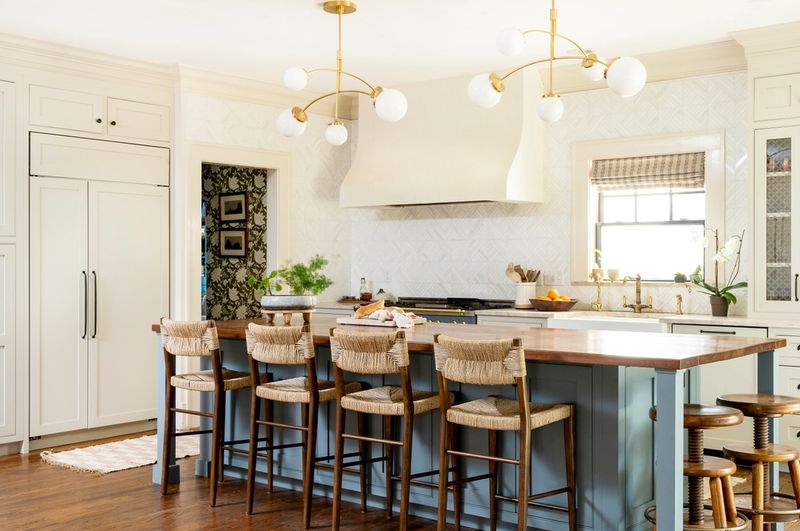
Massive kitchen islands have become the heart of modern North Carolina homes, replacing formal dining rooms as gathering spaces. These generous workspaces often feature seating for 4-6 people, creating casual dining areas perfect for Southern hospitality.
Many new builds in the Triangle and Charlotte regions showcase islands exceeding 8 feet in length. The scale makes a dramatic statement while providing practical workspace for everything from rolling out pie crusts to homework sessions.
This evolution reflects how Carolina families actually live and entertain today – more casually, with cooking and socializing happening simultaneously.
16. Mixed Metal Finishes
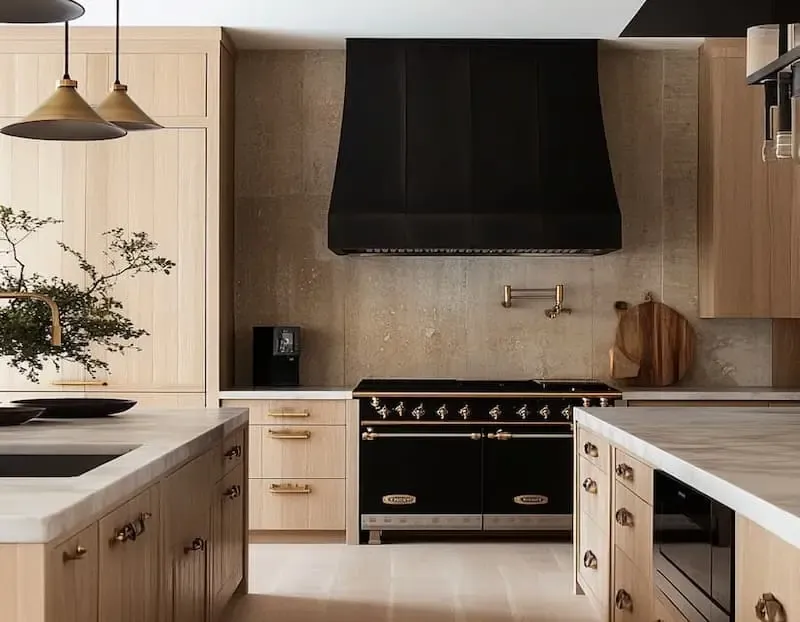
Breaking all the old design rules, today’s stylish North Carolina kitchens confidently mix brushed brass lighting with stainless appliances and matte black hardware. This intentional mixing of metals creates depth and visual interest that feels collected over time.
The key is balance – usually limiting to 2-3 metal finishes within the same space. I’ve seen gorgeous examples in Durham renovations and Charlotte new builds where different metal elements complement rather than compete with each other.
This approach feels fresh and deliberate compared to the matchy-matchy metal finishes of decades past.
17. Matte Black Fixtures And Hardware
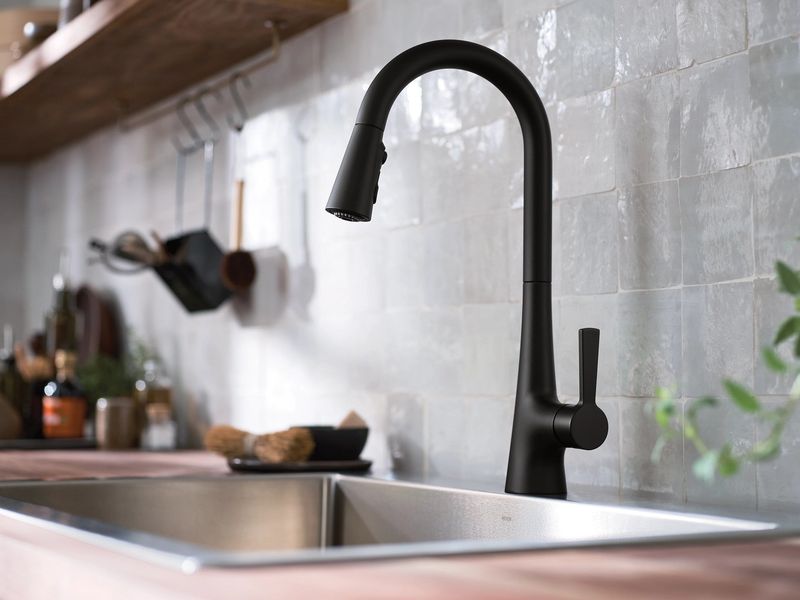
Sleek matte black faucets, cabinet pulls, and lighting have revolutionized North Carolina kitchens with their contemporary edge. The non-reflective finish offers sophisticated contrast against both light and dark cabinetry.
Unlike trendy finishes of the past, matte black has staying power because it functions almost as a neutral. Many Raleigh and Charlotte designers consider it the “new stainless steel” for its versatility and ability to complement multiple design styles.
The dramatic yet understated look works equally well in mountain cabins near Asheville and sleek urban condos in Charlotte’s Uptown district.
18. Open Shelving Instead Of Upper Cabinets

Forward-thinking Carolina homeowners are tearing out upper cabinets in favor of open shelving that showcases colorful dishes and heirloom pieces. This architectural choice instantly makes kitchens feel more spacious and contemporary.
Floating wooden shelves against tile backsplashes create a custom look that’s both functional and decorative. The style works particularly well in smaller kitchens typical of historic neighborhoods in Raleigh, Durham, and Charlotte.
Beyond aesthetics, open shelving encourages curation and organization – you’ll naturally display only your most beautiful pieces when they’re constantly visible.
19. Integrated Appliances With Panel Fronts
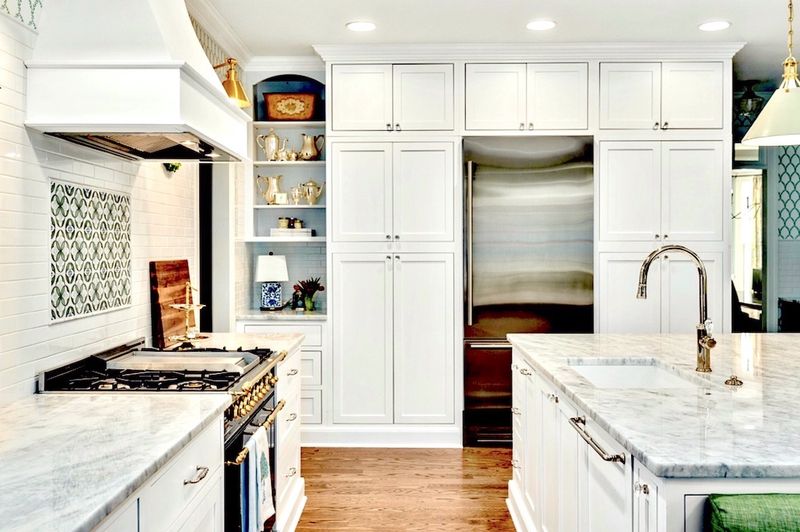
Carolina’s most sophisticated kitchens now feature refrigerators and dishwashers completely disguised behind cabinetry panels. This seamless look eliminates the visual disruption of stainless steel appliances, creating a cohesive design that feels intentional and custom.
Particularly popular in Chapel Hill’s high-end renovations and Charlotte’s luxury condos, these hidden appliances allow the architectural elements of the kitchen to take center stage. The clean aesthetic works with both contemporary and traditional cabinet styles.
Though more expensive initially, this approach creates a timeless look that won’t easily date your kitchen.
20. Oversized Pendant Lighting
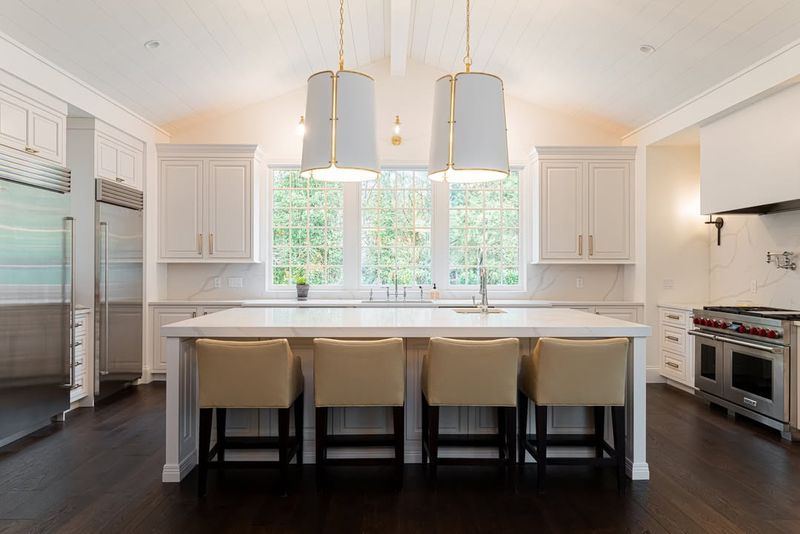
Statement lighting has transformed North Carolina kitchens from merely functional to truly designed spaces. Oversized pendants – whether in natural materials like rattan or industrial metals – create focal points that anchor islands and dining areas.
The scale makes these fixtures almost sculptural, adding personality and style without permanent commitment. I’ve seen stunning examples throughout the state, from coastal Wilmington homes to mountain retreats near Boone.
Unlike recessed lighting that disappears into the ceiling, these bold fixtures announce that the kitchen is worthy of design attention and investment.


